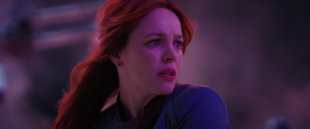Since the launch of its Phase 4 last year, the Marvel Cinematic Universe is in the midst of a rather chaotic transition without a well-established narrative red threadexcept for his recent exploration of the possibilities of Multiverse. This narrative object with still vague contours, highlighted since the series Lokiis the door open to the craziest ideas, slight variations causing big changes in What If…? to fan service the most total, interweaving several cinematographic sagas in Spider-Man: No Way Home. the mcu slowly becoming more complex by tending more and more towards comics, introducing concepts into the mind of the average spectator and at the same time characters, in addition to defining a new status quo for what remains of the avengers. By its very title, therefore, we had wild expectations of Doctor Strange in the Multiverse of Madnessa film promising from the outset to make us discover different realities and directed by none other than Sam Raimi (the trilogies Spiderman with Tobey Maguire and evil Dead with Bruce Campbell, among others), who is therefore well versed in superheroes and horror films.
A real good surprise in terms of direction and character development.
Indeed, if it was not clear enough through the promotional videos, the director gives us a feature film Marvel much darker than usual with horrifying touches and manages to keep his artistic touch despite the constraints posed by this (very) extensive universe. On this subject, we can only strongly advise you to have watched the series Disney+ WandaVision before going to theaters at the risk of missing out on the characterization of the scarlet witch by Elizabeth Olsen, and of course the Doctor Strange of 2016. The rest seems optional to us, even if the episode of What If…? dedicated to the wizard acts as a good bonus, among other things. In all cases, don’t arrive late, because it starts at a quarter turn !

Michael Waldron’s scenario turns out to be much more classic in the end than the trailers suggested., which also deliberately concealed the real issues and showed a little too much for our taste. Either way, the ins and outs are fairly simplistic, but nonetheless logical in terms of the path. We could thus sum it all up as a tense chase through the Multiverse. Clearly, such a controlled narrative is much better than a succession of inconsistencies to justify fan service, and the scriptwriting facilities inherent in this type of project are generally accepted. We took pleasure in seeing this succession of events unfold before our eyes and the good two hours that the film lasts paraded without ever tiring, alternating with accuracy between action and exposition scenes, while offering very stylized transitions. The ending also surprised us in its suddenness, which at the time made us believe in an additional act, before the credits started and left us speechless. Pure Sam Raimi in short, who does not hesitate to self-reference or reuse in his own way other cult scenes from 7and art.

And what about Multiverse in all of that ? Its use may disappoint some who were perhaps expecting a wave of fan servicesince the universes actually visited can be counted on the fingers of one hand, a bit of a shame with such a title, but at least the film does not scatter too much. The “cameos” are therefore in limited quantity and generally serve a very specific function that will inevitably be debated. This in no way detracts from the pleasure provided during viewing, with a slight side of Proust’s madeleine reinforced by a certain musical theme for a particular character, and some well-placed references for those who diligently follow the mcu. The change of scenery is therefore minimal, but some plans still manage to impress. the Multiverse ultimately serves more as a tool at the service of the development of Stephen and wandato mirror their actions.

Doctor Strange in the Multiverse of Madness is perhaps far from the great upheaval hoped for and only opens doors for the future of the mcubut it constitutes a real good surprise in terms of realization and development of its characters. Finally, tradition marvel studios obliges, we are entitled to two post-credits scenes. The first serves as an introduction to a potentially important figure, but that a priori only comic book readers will recognize, and attenuates the « shock » of the epilogue. The second, located at the very end of the credits, is undoubtedly a little kiff from the director next to which the general public risks remaining unmoved, but which made us laugh. Because Doctor Strange is brought back, let’s hope that Sam Raimi will then make a new foray into the mcu.
Note : 4 out of 5 stars
The first Doctor Strange and the WandaVision series are available on Disney+, the subscription to which costs €8.99 per month or €89.90 per year.
.




